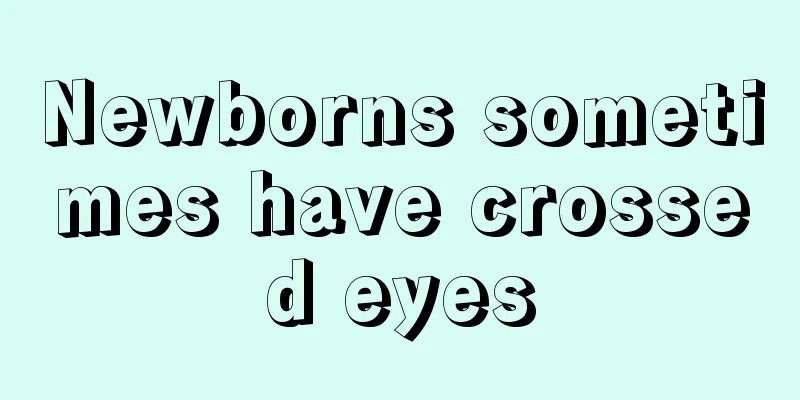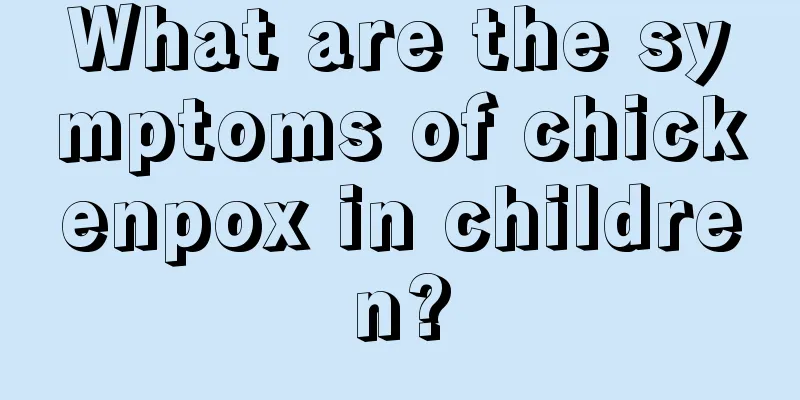Newborns sometimes have crossed eyes

|
If parents find that their newborn's eyes are sometimes crossed, they don't need to worry, because the child's eye adjustment function is not yet fully developed, and this situation may occur unconsciously. As the child develops well, this situation will gradually disappear. Of course, if the child always has this situation, they should go to the hospital for examination in time, and it can be corrected through surgery or other methods. Newborns sometimes have crossed eyes The eye adjustment function of infants and young children is not fully developed, and babies are prone to cross-eye phenomenon without realizing it. Generally speaking, as the baby grows older, the cross-eye problem will gradually disappear. Under normal circumstances, it is impossible to tell whether the crossed eyes of a baby under three months old are caused by illness or developmental problems. Some parents may find that their baby's eyes are facing toward the middle, but when they go to the hospital for a check-up, the doctor says that they are not squinting. This may be what is medically known as epicanthus, also known as pseudoesotropia. This is because people are accustomed to judging whether the eyeball is correctly positioned based on whether the whites of the eyes on both sides are exposed symmetrically. When some children have a flat nose and a skin flap (epicanthus) at the inner corner of the eye, it will block part of the white of the eye on the side of the nose. In this way, when the child looks sideways, one eye seems to be slanted towards the middle. What to do if your child crosses his eyes The baby's crossed eyes are usually caused by strabismus. Different treatment methods are used according to the different causes of strabismus: 1. Corrective surgery: Although congenital esotropia in concomitant strabismus has nothing to do with eye adjustment, it has a great impact on the development of binocular single vision function. The best treatment is surgical correction at the early stage of visual function development at the age of 2. Esotropia that occurs after the age of 2 to 3 is mostly related to excessive accommodative convergence caused by hyperopia. This type of strabismus requires full mydriasis and eye examination. Those with hyperopia should be fitted with adequate glasses and wear them for 3 to 6 months to correct or partially correct the strabismus, and then surgical treatment can be performed for any remaining esotropia. 2. Surgical treatment: If the esotropia does not change after wearing glasses, surgical treatment is the only option. If the strabismus is completely corrected, you can continue to wear glasses. If the hyperopia is very high, you can also correct the strabismus through surgery and reduce the degree of glasses you need to wear. |
<<: Newborns poop a little bit each time?
Recommend
How to treat asthma in children?
Many mothers are worried and nervous, and feel he...
How many times a day is normal for a newborn baby to poop?
Newborns begin to slowly adapt to the external en...
What to do if your child is withdrawn? Communicate with your child more!
A child’s introverted personality is a problem th...
What are the baby's developmental indicators at two months?
Newborn babies are very difficult to raise, and w...
Symptoms of mental illness in children
Some diseases will manifest themselves from an ea...
Is it okay for children to soak their feet every day?
Many people think that soaking children's fee...
What to do if the newborn's temperature is 38 degrees
Generally speaking, the constitution of newborns ...
Is it OK for children to take health supplements?
Our health depends on a lot of food every day to ...
How to treat sinusitis in children
There are many people around us suffering from rh...
Are secondhand smoke harmful to newborns?
Many people have the habit of smoking, and everyo...
How to supplement children with anemia
Anemia in children will affect the functions of v...
Why does a child blink suddenly?
The movements of a child who has not yet learned ...
What to do if the new baby has poor digestion
Since infants' gastrointestinal functions are...
Why does a child sweat when he just falls asleep?
Many parents will find that their children will h...
Symptoms and causes of poor digestion in one-month-old babies
Because the digestive systems of newborns are sti...









